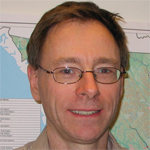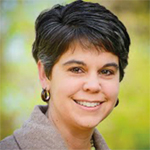Background: Dr. Losina immigrated to the U.S. after earning a master’s degree in mathematics from Odessa University in Ukraine. She earned a PhD in biostatistics from Boston University, and in 2006 joined Brigham and Women’s and Harvard as center co-director and director of methodology of ORACORe, as well as director of the methodology core of the National Institute for Arthritis and Musculoskeletal and Skin Diseases–funded Brigham Multidisciplinary Clinical Research Center. She and her colleague, Jeffrey Katz, MD, lead a core team of four faculty members, five research assistants, several statisticians, one administrative director, and one administrative coordinator. The team works with centers around the country with “amazing collaborators who have a lot to contribute and share,” she says. A mathematician by training, Dr. Losina says she has found her “dream job” by combining math and medicine. Her main interest is using computer simulation to model the natural history, prevention, and management of chronic diseases.
“The modeling approach is a very powerful methodology that allows us to synthesize multiple pieces of evidence that are arising from molecular science, clinical science, and health policy science—to portray the disease as a multidimensional process,” she says.
Dr. Losina is internationally recognized for her work in osteoarthritis (OA), health policy research, and outcomes research. More than half of her 225 peer-reviewed publications have focused on musculoskeletal research. She joined the ARHP in 2003, has presented her scientific findings at annual meetings and, since 2009, has been an ARHP representative to the Committee of Journal Publications at the ACR.
Q: A lot of research around osteoarthritis has been published in recent years. How is your team working to synthesize all the new information?
A: Many practicing rheumatologists would identify with the fact that many journal papers now are focused on short-term treatments. But, I think, they also know that OA is a long-term condition. The question is how to combine the piecewise information about the impact of a particular treatment over a short period of time with the understanding that OA is a long-term chronic disease still remains unanswered. Modeling helps to combine all pieces of evidence together. It helps physicians to portray the future risk of OA development and benefits of prevention and a particular treatment for their patients.
Q: What advice do you have for the next generation of researchers?
A: I think it is important to have a very good theoretical basis, but no less important to find great mentors. I was blessed to have Dr. Jeffrey Katz, who really taught me a lot of clinical rheumatology. But also, build your dream team. If you have a great idea, it is important to share those ideas with smart, kind, hard-working people. Team effort and great mentorship are the keys to success.



